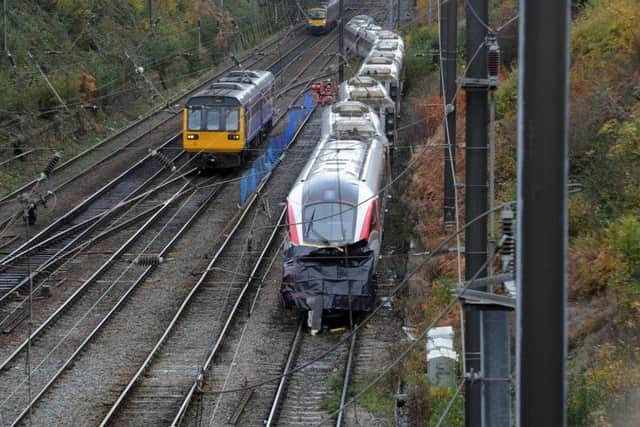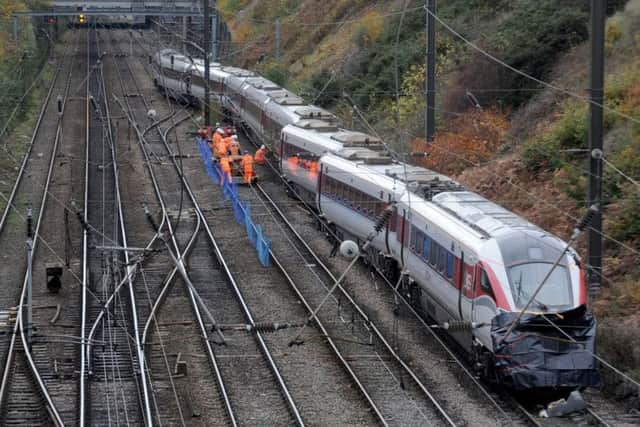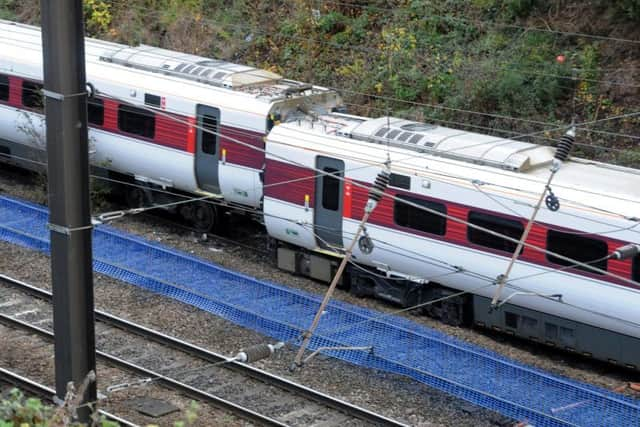Leeds train derailment: This is what will happen to the LNER trains involved in the Neville Hill depot crash
A Class 800 Azuma - one of the 27 new trains that went into service on the East Coast Main Line this year - was involved in the derailment at Neville Hill and photos from the scene show significant damage to one of its cabs.
It struck a diesel High Speed Train - one of the 1970s locomotives that have worked the route for 40 years and are currently in the process of being retired and replaced by 65 new Azumas. Both trains were empty at the time and the drivers were not injured.
Advertisement
Hide AdAdvertisement
Hide AdShocking photos show extent of damage to derailed trains involved in Neville Hill depot crashThe HST also suffered damage to one of its power cars. The engine, number 43300, is named Craigentinny as a tribute to the 100th anniversary of the Edinburgh depot where it is primarily maintained.


Rail forum users speculated that the HST was unlikely to be repaired, as it is close to its planned scrap date. The carriages, which appeared undamaged, are likely to be allocated to another power car before being leased to another operator once the HSTs have been retired.
Others pointed out that it could be spring before the Azuma returns to the rails.
Railway engineer and writer Gareth Dennis agreed that the older locomotive was likely to be scrapped several months ahead of schedule.
Advertisement
Hide AdAdvertisement
Hide Ad"It was already destined for scrap. It's possible some of its parts may be re-used in other trains. The carriages are fine - they are indestructible in slow collisions and will be used in another formation.


"It shook the whole house": Witness describes hearing Neville Hill train crash"The Azuma is in a fixed formation, and there seems to be a lot of damage in between each coach. The damage is significant and I wouldn't be surprised if it was taken on a lorry up to the Newton Aycliffe plant for repairs. The damage to the front of the train looks dramatic, but the noses are designed to fall to bits and the fibreglass frontage will probably be replaced."
The Azuma cost around £30million and is owned by a consortium called Agility Trains, who have leased it to LNER on a long-term basis. It is insured.
"There will be some inconvenience caused by the crash. LNER have come up with detailed plans for training staff on the Azumas and deciding on the routes for the new trains. It will be a strain on LNER and will have a short-term impact, but it could also accelerate the introduction of another Azuma."
Advertisement
Hide AdAdvertisement
Hide AdMr Dennis added that it is not unusual for trains approaching Neville Hill to be so close together on a section of track.


"There is a history of issues with that approach. Permissive working is in operation, where more than one train can be on the same section, but they run them very slowly and queue them up to get them off the main line.
"It's super slow and it is unlikely that this is the result of a signalling error."
The Azuma trains only came into service in May, and were unveiled amid much fanfare as they were the first new rolling stock to operate on the East Coast Main Line for several decades.
Advertisement
Hide AdAdvertisement
Hide AdThe 65-strong fleet cost around £2.7billion and can run at 140mph - although the speed limit on the route is only 120mph.
Less than half of Northern trains are now running on timeThey are assembled by Hitachi at a plant in County Durham, with the body shells being imported from Japan.
One new Azuma is being introduced per week and one old locomotive removed from service until next spring, when the fleet will have been replaced entirely.